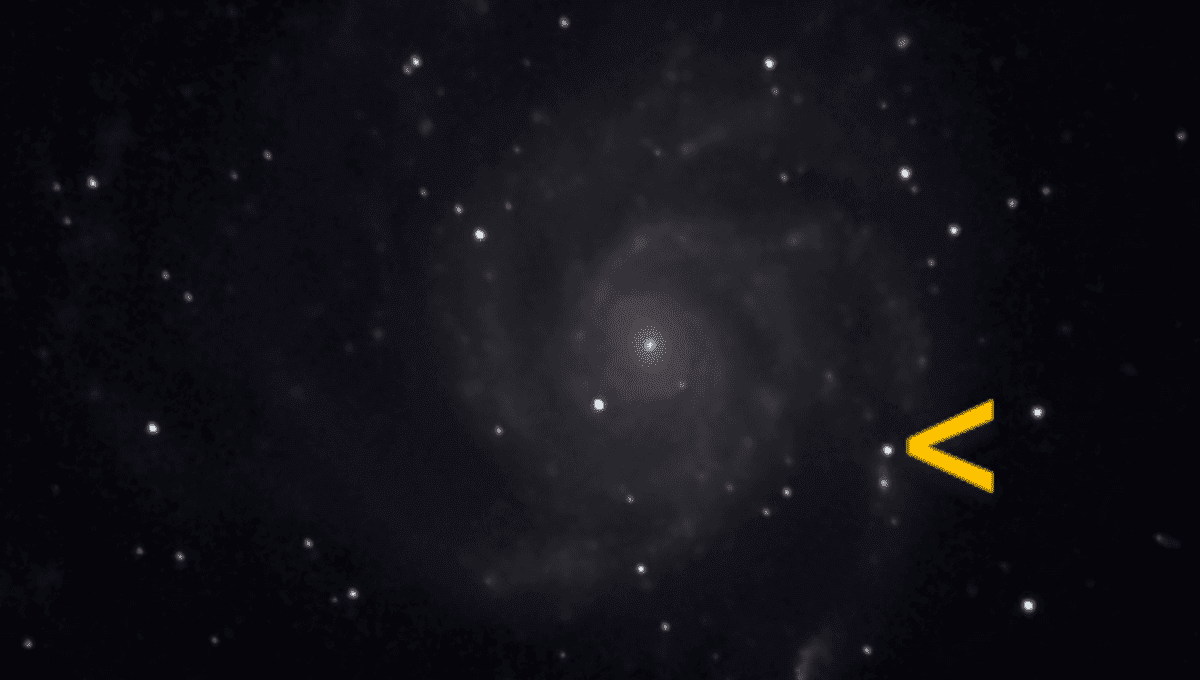
If you own a telescope now might be a really good time to take a look at a famous galaxy in Ursa Major. If you don’t, but know someone who does, see if they’ll let you take a look. It’s not often you get to watch a giant star explode before your eyes and shine like a billion Suns. When it first hit the headlines the new supernova took a mid-sized home telescope to see, but now even a small telescope will pick it up under dark skies.
Late last week astronomers using the 2-meter Liverpool Telescope confirmed a report by Japanese astronomer Koichi Itagaki of a possible supernova (named SN 2023ixf) in the Pinwheel Galaxy, also known as Messier 101. Even if you haven’t heard of the Pinwheel, you’ve probably seen images of it before. Its near-perfect spiral structure, face-on orientation to Earth, and relative closeness (21 million light-years) mean it has been a favorite target for astrophotographers.
It will take months or years for results to be published, but with both the Hubble and Swift space telescopes abandoning their planned observations to focus on SN 2023ixf, data is flooding in. The team that confirmed its supernova status finished their report by saying “Additional follow-up is encouraged.” With the Pinwheel never setting from much of the Northern Hemisphere, they haven’t been short of takers, both amateur and professional.
Astrophotographer Andrew McCarthy, known for his astonishingly detailed images created by combining many images, is one who has already answered the call.
Amusingly, this is what McCarthy considers a poor image of the Pinwheel, with the supernova bright in the top arm. McCarthy points out that every other individual star visible in the image is from our own galaxy – those in the Pinwheel are clusters of stars so tightly bunched they can’t be separated.
The first confirmed observations were at 16th magnitude – and by the time the news got out this had shifted to 14th (lower magnitudes mean brighter). That’s just barely within the capacity of a medium-sized home telescope to see under dark skies. The last few days have seen the brightness level off at about 11th magnitude, within the range of starter telescopes. However, hopes it would reach the point where binoculars could view it (about 9th magnitude) don’t look like coming to fruition.
Since 1900 the Pinwheel has hosted five supernovae, as well as a particularly spectacular nova. With the Milky Way not having had a confirmed supernova for 400 years, its neighbor is really showing us up. The Pinwheel has 2-10 times as many stars as our own galaxy, but is much more active in forming new ones, possibly because of strong gravitational interactions with its smaller companion galaxies.
One of these previous events, SN 2011fe, was another of the four closest supernovas this century. Both 2011fe and SN 2014J were Type Ia supernovas (white dwarfs). Indeed, 2011fe became the standard against which more distant Type Ias are measured, so SN 2023ixf represents the closest example of a confirmed Type II supernova since 2004.
If you don’t have access to a telescope, or can’t get away from city lights, you can observe the telescope online (weather permitting) with the Virtual Telescope Project, which will be offering a live feed of it from 10:30 pm UT on May 26.
Source Link: This Weekend A Nearby Supernova Is Visible Even With A Small Telescope